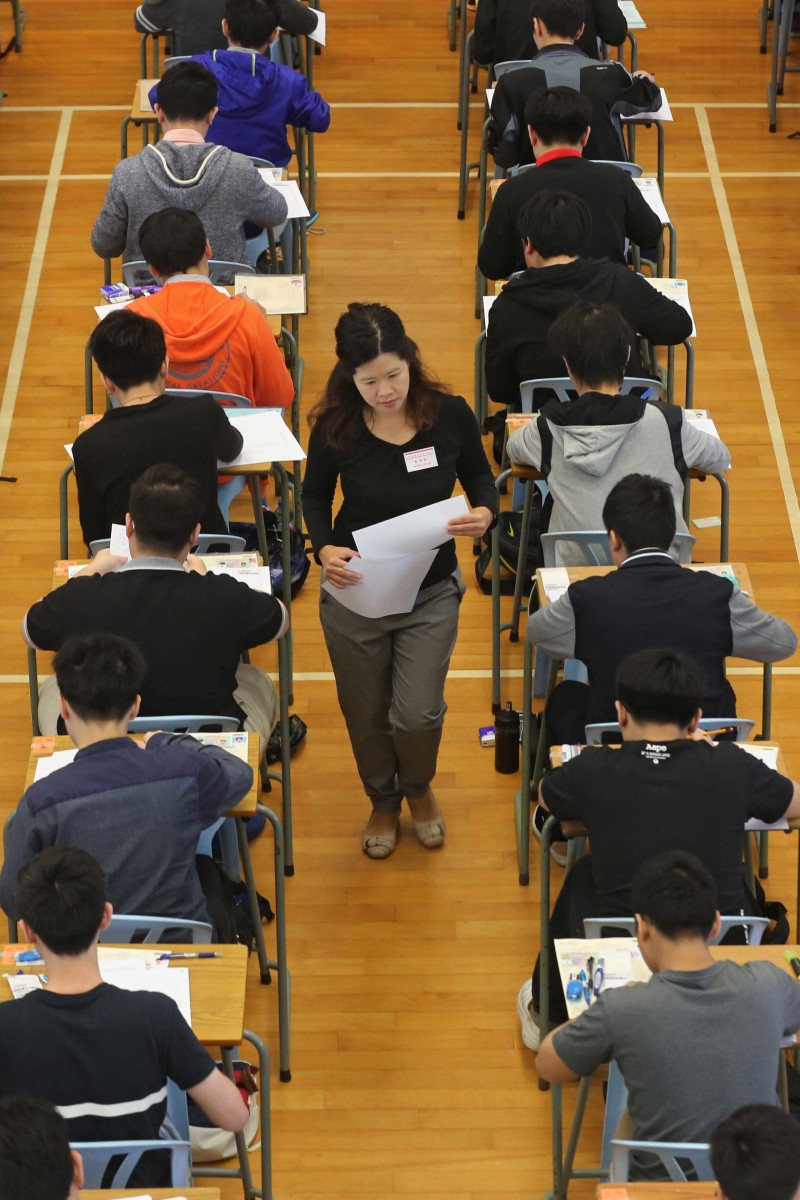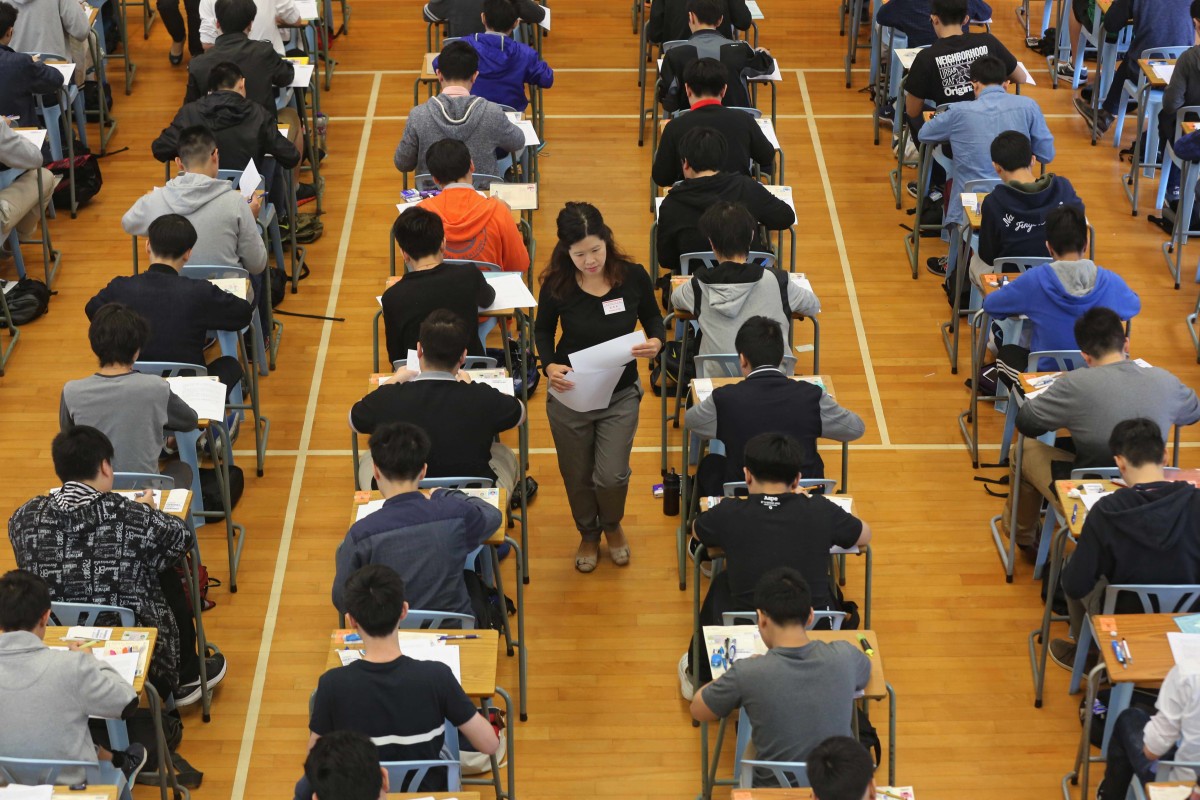
This year’s exam was designed to challenge students by requiring more than maths ability
 Students weren't the only ones challenged by the maths exam.
Students weren't the only ones challenged by the maths exam. This year’s DSE Compulsory Maths Paper One (long questions) exam was trickier compared to last year’s, secondary school teachers say.
With a focus on 2D and coordinate geometry, many of the questions required students to visualise and draw out the shapes mentioned in the problems. “Students needed to understand the question and do their own sketches to solve the problem, so for some it may have been more difficult,” said a maths teacher surnamed Leung. “Even the question on mensuration in section A2 didn’t come with a graph, as it did in 2014.”
For Q. 20 of Section B – the final, most difficult question – students had to realise that the circumcentre of the obtuse triangle lay outside the triangle, or else they would have had trouble completing all the sub-questions.
“Even other teachers and I had to think over the question quite a bit. It’s not a question type commonly seen on the DSE, but more like the long questions you see on the [old] Hong Kong Certificate Examination,” said. another teacher, surnamed Ho. “Looking forward, it may be good to do more HKCEE practice papers.”
Other tricky parts of the exam included a question on polynomials in Section A2, which was worth 10 marks. Ho says usually polynomial problems are usually set to the power of three, but this time it was set to the power of four, with many unknown constants.
“It wasn’t actually too difficult, but you need to be a bit smarter to see through that and find the solution,” Ho said.
This was also the first time the topic of cumulative frequency was tested in the long question format in DSE.
In past years, Paper One had a total of 19 questions, but this year there were 20 because there was one additional question in Section B.
“Spreading the marks over six questions in Section B instead of five is a good thing. Generally the questions didn’t delve too deep into concepts involved,” said another maths teacher surnamed Li, adding that the exceptions to this were one question on probability, and the final question on geometry. He said the final questions usually focused on applying math concepts to a real-life context, but for that this year and last year, it had been more abstract.
W. L. Lee, a maths tutor at Modern Education, noticed a trend towards more word-based questions. For example, for the question on transformation, students were asked to provide its geometric meaning. “Some students may lose points there. You can’t just know the maths. You need to have memorised the definitions as well,” he said. “If you didn’t know the definitions, you wouldn’t be able to sketch the shapes you needed to solve the problems.”
However, the teachers agreed that section A1 was quite straightforward, and students who did reasonably well in this section should be able to get a level 2 or 3.
They also thought that Paper Two, the multiple choice paper, was relatively easier compared to previous years, although there were several questions that had to be indirectly solved. Lee said that in the coming years, there would be more questions asked in this way.
But Wong Tsz-to, 17, from Diocesan Boys’ School said this year’s Paper Two was harder than last year’s. “It was very demanding and I didn’t have enough time to complete the questions. Solving the geometry questions was very time-consuming,” he said.
Lee said in order to get a Level 5**, students may need to earn at least 93 marks out of the 105 total.